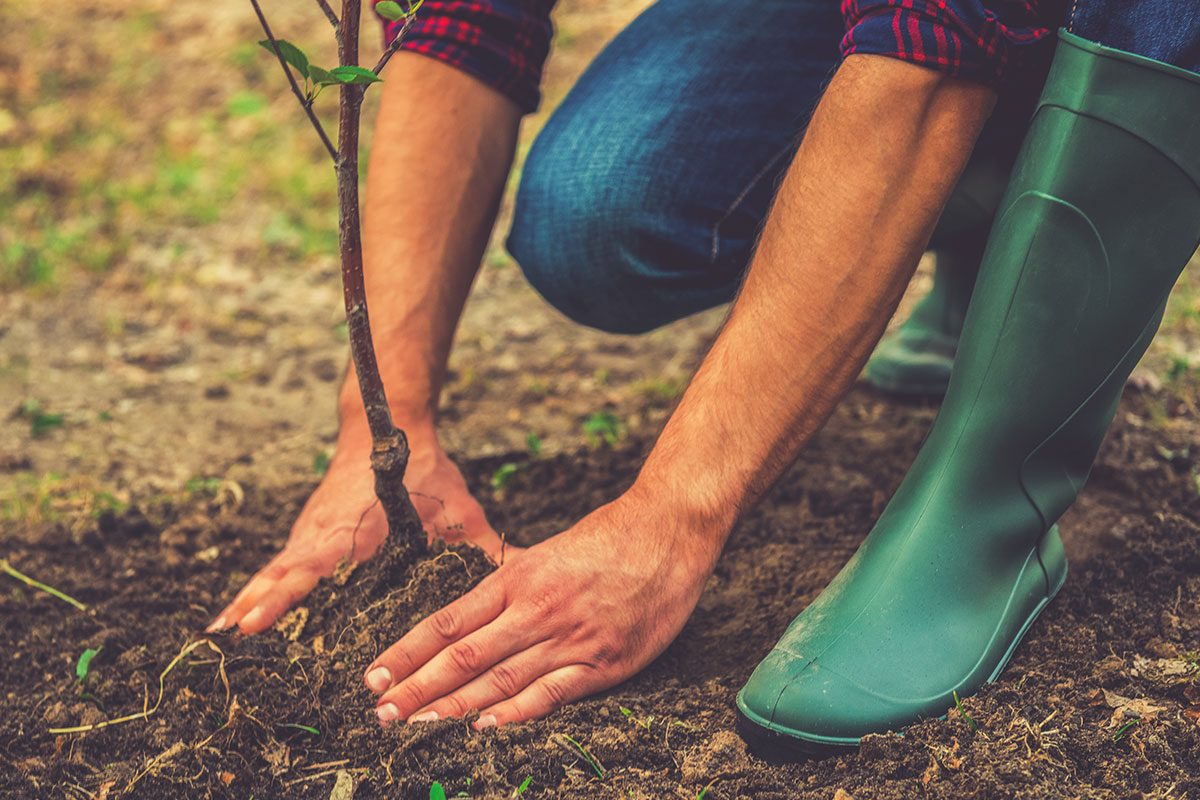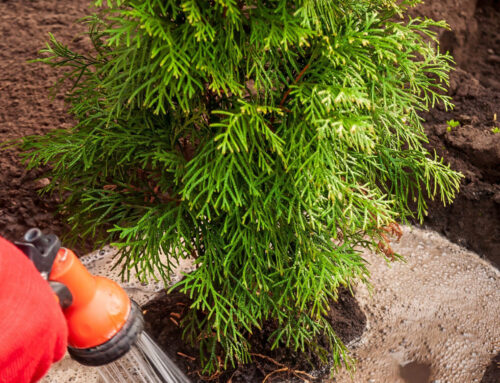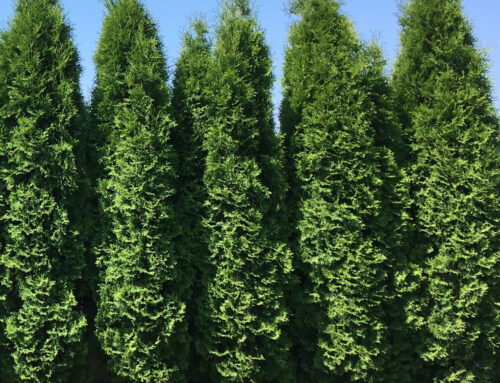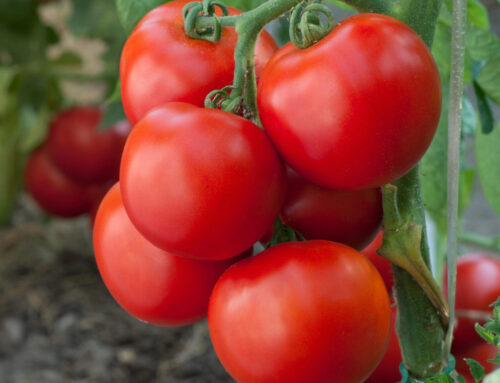Your Guide to Successful Planting
1. CALL BEFORE YOU DIG
Several days before planting, call the national 811 hotline to have underground utilities located.
2. Before You Plant
Always plant in well-drained soil. Much of our local soil contains clay. To test for soil drainage, dig a hole and fill it with water. If the water does not drain in 12 hours, it probably contains clay and the soil will need to be amended.
3. The Planting Hole
To plant your tree or shrub, dig a hole twice as wide as the diameter and 6”-8” deeper than the root ball, replacing the 6”-8” of soil with enriched backfill. Then, compact this 6”-8” of soil. Once the plant is placed in the hole, the top of the root ball should be slightly above or level with the surface of the ground.
4. Placing Your Plant in the Hole
Remove all tags, wires or ropes from the stems or trunk, and do the following:

Balled & Burlapped (B&B) Plants:
DO NOT remove the wire basket. Once the enriched soil has been placed 3/4 of the way up the root ball, cut & fold down the top 1/4 of the basket & burlap, and remove any strings around the tree trunk. Fill the remaining hole with enriched soil to its original level.
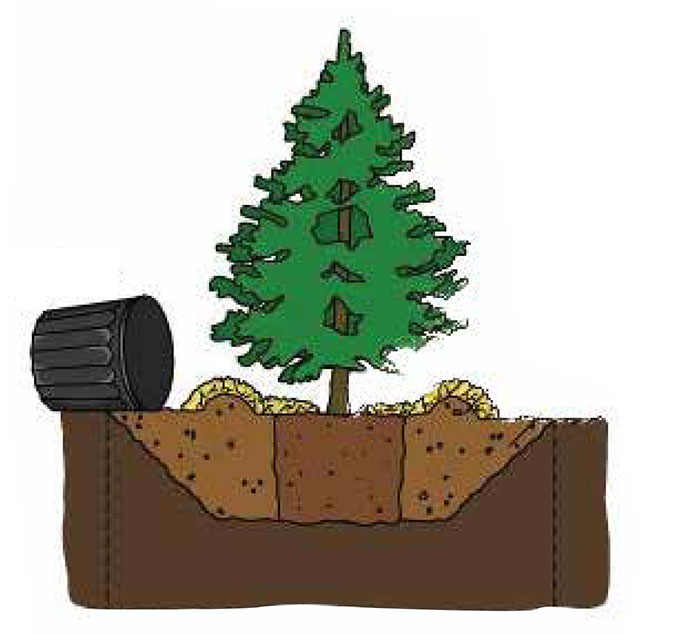
Container Plants:
Ease the pot off without disturbing the root ball. If the roots are extremely compacted, you may need to make a few shallow cuts through the roots on the side and bottom of the root ball.
5. Amending Your Backfill Soil
After digging your planting hole, create a 50/50 mix of excavated soil and Master Nursery Bumper Crop. Place your plant in the hole and begin backfilling around the root ball. Lightly tamp the soil every 2 – 3 inches and sprinkle with Espoma Bio-Tone Starter Plus. Continue to backfill your hole to the soil’s original level. Use any excess soil to build a ring approximately 6 – 10 inches from the outside of the hole. This will help minimize water runoff and instead allow it to move slowly down to the root zone of the plant.
6. Watering
The roots of B&B and container plants dry out faster than the soil around them. Therefore, it is important to monitor soil moisture. Water slowly to attain deep water penetration which encourages widespread root development. You will need to water once every 7-10 days (or more during hot, dry periods).
General Watering guidelines:
- 1 gal. Pot – trickle water for approx. 15-20 minutes
- 2 gal. Pot – trickle water for approx 30-40 minutes
- 3 gal. Pot – trickle water for approx 40-50 minutes
- 4 gal. To 7 gal. – trickle water for approx 60 minutes
- B&B – trickle water for 60-70 minutes
Remember, if it rains for 1 hr, it probably has not been enough water for a newly planted shrub or tree.

7. Staking
It is not necessary to stake newly planted trees unless the tree is top heavy or planted in a windy location. If staking is necessary, connect the staking kit to the tree as designed. Allow for some movement in the plant, as this promotes strong root growth. Remove all staking after one growing season so as not to inhibit root and trunk development.
8. Mulching
Add a 2 to 3-inch layer of mulch around the planting area. This will prevent water loss, and keep mowers and trimmers from getting too close to the trunk. Avoid overly deep mulch up against the trunk or stems of the plant as this can promote disease, pest injury and even stunting of some plants.
9. Winter Protection
Apply Wilt -Pruf (an anti-transpirant) to all broadleaf evergreens. Apply in November and re-apply again in February, and according to label directions. This will protect your investment from drying winter winds.

